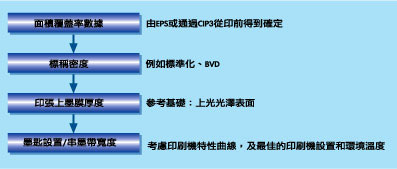For a long time, ink screws or ink keys were manually adjusted according to the feeling. The electronic plate scanners introduced in the early 1980s, when the value of the area coverage provided by these devices can determine the presetting of the ink supply device, but usually a large number of sample sheets need to be taken out to inspect and correct the ink supply amount. Due to objective difficulties, it takes a long time to make these corrections, and it wastes a lot of printed sheets before the formal printing can be performed, and the system's limitations are discovered shortly after use. But twenty years later, automatic ink supply presets have grown considerably. More and more printers automatically determine area coverage values ​​directly from prepress, rather than obtaining these values ​​from the plate scanner, thus saving Time, and eliminate the sources of error, but even so, the results are still not ideal. In order to get good impressions quickly and efficiently, some important parameters must be considered. What does auto-inking preset mean? This simply illustrates the automatic adjustment of the ink volume control components in each ink zone of the printer. The purpose is to make the first check of the impression of the printed sheet as close as possible to the proof or proof, thereby saving time and material during the color matching process. Web printing is no different from sheetfed printing. The initial setting of the ink supply device is very important for quickly achieving a good first inspection sheet, but we do not consider it here. What process is required to reach the automatic preset value? Automatic presetting occurs in two phases. The first stage is to determine the relationship between graphic area and non-graphic area—that is, the area coverage on each color plate. This area coverage percentage message is used in the second stage to calculate the ink set value for each ink zone. This setting becomes the basis for the first sampling proofs. What is a good default feature? How is the first sampled sample inked and how does the sample proved to be marketable? The closer the visual evaluation and the measured density values ​​are matched, the better the preset effect will be. This will save time and paper waste. Calculation stage In order to understand the possibilities and limitations, to accurately calculate the preset value, we should carefully consider the calculation phase. The calculation steps and input values ​​that work are shown in Figure 1. Figure 1: Pre-calculated steps and input data for the automatic ink supply The computing system must process the input values ​​zone by zone, first the area coverage itself, and secondly the required ink volume. However, only the required amount of ink is not enough for the computing system. In order to calculate the correct preset value, you must know the relationship between the ink setting and the presence of ink, that is, first: 2) Under what conditions does the ink supply thickness of the ink film appear? Then it is calculated in two steps: According to the specified amount of ink, calculate the nominal ink film thickness on the substrate. Figure 2 shows the relationship between ink density and ink film thickness for printing basic yellow, magenta, cyan, and black inks. The correct setting of the ink metering elements is calculated from these nominal ink film thicknesses and area coverage. Therefore, when the area coverage, the substrate characteristics, and the transfer characteristics of the printing press are known, a certain ink film thickness is adjusted by a certain ink key adjustment, so that a certain amount of print ink is obtained. Figure 2: Diagram of the relationship between ink density and ink film thickness for basic yellow, magenta, cyan and black prints What does the system need to do optimally? The software of the computing system is quite important. For example, the effect of horizontal cross-inking or ink flow in ink fountains, these parameters are often ignored by other systems. However, all computing systems have one thing in common - accurate values ​​must be generated as accurately as possible from the above described relationships. The most important thing is to know what opportunities a computing system has as close as possible to the best predicted value. Obviously, the result obtained by the best calculation program also depends on the quality of the input value. The interrelationship between quantities is also a factor in the calculation. Where does the area coverage data come from? The area coverage data is derived from a color separation scanner. However, area coverage data obtained by a plate scanner such as EPS is more common recently. The surface of the plate was scanned optically and analysed graphically and non-graphically. The method of obtaining data directly through the CIP3 interface by prepress processing is now more and more widely used. Eliminate sources of error and avoid false readings With routine maintenance and calibration, each measurement system can be maintained within the tightest tolerances. The surface of the printing plate has a different structure due to the different surface treatment and metal processing, thereby affecting the measurement results. Therefore, it is very important to carefully select the plate supplier. At the same time, it is also important to recalibrate the scanner when using a new plate. At this time, make sure that there are no handwritten work order numbers or plate color marks in the plate calibration area, as this will affect the calibration. module sofas,modern office sofa,office reception sofa Feat Top International(China) CO.,LTD , https://www.feattop.com
1) What kind of ink film thickness will result from how the ink metering component of the area coverage is set on the substrate? 